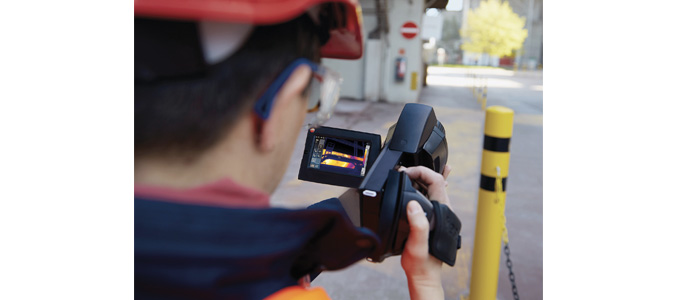- +61 7 3374 2877
- Email Us
Long distances to the measurement object require either a reduction in distance or superior technology. In many situations, measuring technology is the tool of choice: after all, faulty connections on high-voltage lines cannot be examined up close.
For this type of remote application, only a very high-resolution detector and a high-quality telephoto lens can provide the necessary level of detail on the thermal image – and thus enable meaningful analyses to be carried out.
When “getting as close as possible” is Simply not Possible
Whether it’s the spatial conditions that prevent you from getting close to the measurement object or concern for your own safety: if you can’t get close enough to your measurement object, you need to be able to rely on your technical equipment. That’s the reason many technicians turn to a high-resolution infrared camera system that can help clearly detect critical temperature differences and hotspots even at a distance, and to evaluate them without errors.

Just Stay Far Away
The basic requirement for accurate determination of thermal anomalies over long distances – for example at line transition points of high-voltage power lines – is to have a powerful detector. You can use the testo 890, which features a 640 x 480 pixel detector, in conjunction with the new testo SuperResolution technology to create extremely high-resolution thermal images in megapixel quality. Using a telephoto lens, you can be sure to see every detail with the testo 890, even on very distant measurement objects, and you can create precise thermographic analyses.
Though the testo 890 is a specialist in preventative maintenance for power generation and distribution, it is also ideal for research and development application as well as building and industrial maintenance tasks.